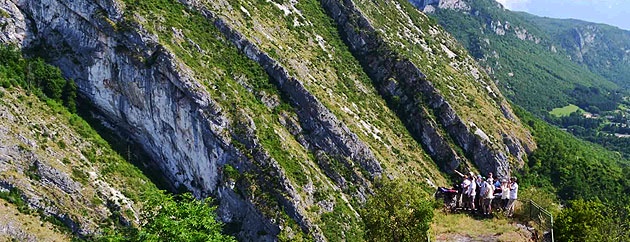
We have an open call for sponsors to join the next phase of our multi-client JIP. We also offer opportunities for individual, bespoke projects and other forms of engagement with our group. Please contact us for further information.
From Traps to Damage
Foreland fold-thrust belts host important economic resources and important targets for hydrocarbon exploration and development. However, forecasting their subsurface structure and response to engineering interventions are difficult to forecast. Structural complexity together with difficulties in seismic imaging makes for significant uncertainties, for example in quantifying trap shape and size. Furthermore, subsurface development is complicated by smaller-scale damage - that include the fracture networks that host hydrocarbons in otherwise low permeability strata, but that can also serve to degrade and partition high porosity reservoirs. Structural damage can also increase risk of top-seal failure. There remain unrecognised uncertainties in all aspects of structural prediction and forecasting in fold-thrust belts. The Fold-Thrust Research Group is an Aberdeen-based team of researchers. Together we provide new research, knowledge exchange and training to help a variety of end-user communities to meet these challenges.
The Fold-Thrust Research Group grew from an initial Pathfinder project and field workshop (in the French Subalpine chains). This spun up into a JIP, F-TRG phase 1 , with the aim to reduce structural risks when exploring and developing hydrocarbon resources in fold-thrust belts. This has supported exploration and development, chiefly in the Papuan Fold Belt. In parallel we have a series of associated projects, including doctoral student research, which aims to characterise the structure of fold-thrust belts. This work links present-day structure and its evolution to the conditions of precursor geology, deformation rates, burial conditions and temperature. We explore the sources of bias and uncertainty in structural interpretation, the better to reduce risks associated with subsurface interpretation.
Click here for recent publications from the Group
